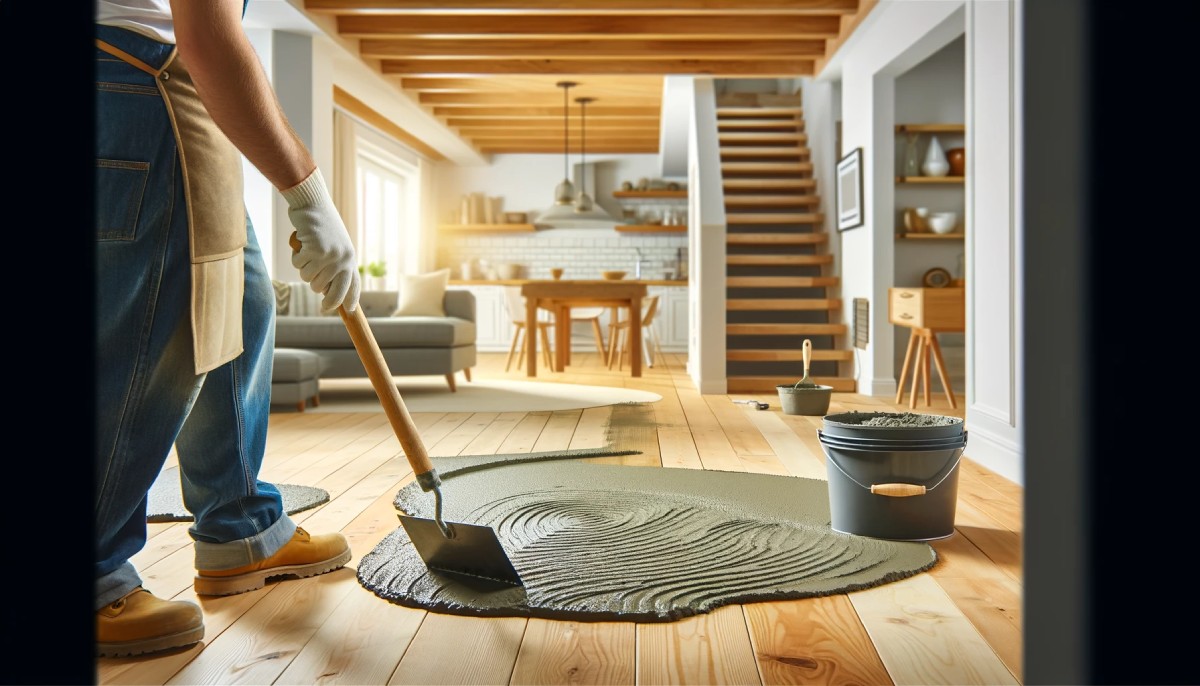Choosing the best floor leveling compound for wood subfloors is crucial for achieving a durable, aesthetically pleasing flooring finish. A well-leveled subfloor provides a stable base for any type of flooring, ensuring longevity and performance. In this article, we will explore various types of floor leveling compounds, their benefits, application methods, and recommended brands.

Key Takeaways
| Aspect | Details |
|---|---|
| Importance | Ensures a smooth, even surface for the final flooring installation |
| Types | Cement-based, gypsum-based, and self-leveling compounds |
| Application | Varies depending on the type of wood subfloor and the compound used |
| Benefits | Enhanced durability, improved aesthetics, and prevention of future flooring issues |
| Recommended Brands | MAPEI, Ardex, and Henry for reliable performance |
| DIY vs. Professional | DIY possible with proper tools and knowledge, professional application ensures precision |
Types of Floor Leveling Compounds
Cement-Based Compounds
Cement-based leveling compounds are popular due to their strength and durability. They are suitable for both small and large areas and provide a solid base for various flooring types. These compounds typically set quickly, allowing for fast installation.
Gypsum-Based Compounds
Gypsum-based compounds are another option, particularly effective for areas that require sound insulation and fire resistance. These compounds are often easier to work with and provide a smooth finish, but they might not be as strong as cement-based options.
Self-Leveling Compounds
Self-leveling compounds are designed to spread out evenly across the subfloor without much manual intervention. They are ideal for DIY projects as they minimize the effort required to achieve a flat surface. These compounds are usually cement or gypsum-based and are known for their ease of use.
Benefits of Using Floor Leveling Compounds
- Enhanced Durability: Proper leveling prevents uneven stress on the flooring, reducing the risk of damage.
- Improved Aesthetics: A smooth, even surface ensures that the final flooring looks professional and clean.
- Prevention of Issues: Helps in avoiding common flooring problems like creaking, buckling, and gaps.
Application Methods
Preparing the Subfloor
Before applying any leveling compound, ensure the subfloor is clean, dry, and free of any debris. Any existing adhesives or coatings should be removed to allow proper bonding.
Mixing the Compound
Follow the manufacturer’s instructions for mixing the leveling compound. It’s essential to get the right consistency to ensure the compound spreads evenly.
Applying the Compound
Pour the mixed compound onto the subfloor and use a trowel or spreader to distribute it evenly. For self-leveling compounds, minimal spreading is required as the compound will flow to level itself.
Recommended Brands
- MAPEI: Known for high-quality cement-based and self-leveling compounds.
- Ardex: Offers a range of leveling compounds suitable for various applications.
- Henry: Provides reliable gypsum-based compounds with excellent performance.
DIY vs. Professional Application
While DIY application is possible with the right tools and preparation, professional installation ensures precision and reduces the risk of errors. Professionals have the expertise to handle different types of subfloors and compounds, ensuring a flawless finish.
Conclusion
Selecting the best floor leveling compound for wood subfloors is essential for achieving a perfect base for your flooring. By understanding the different types of compounds and their benefits, you can make an informed decision that enhances the durability and appearance of your floors. For professional assistance, consider scheduling an installation with experts to ensure the best results.
from
https://frank-thompson.s3.amazonaws.com/index.html
Comments
Post a Comment